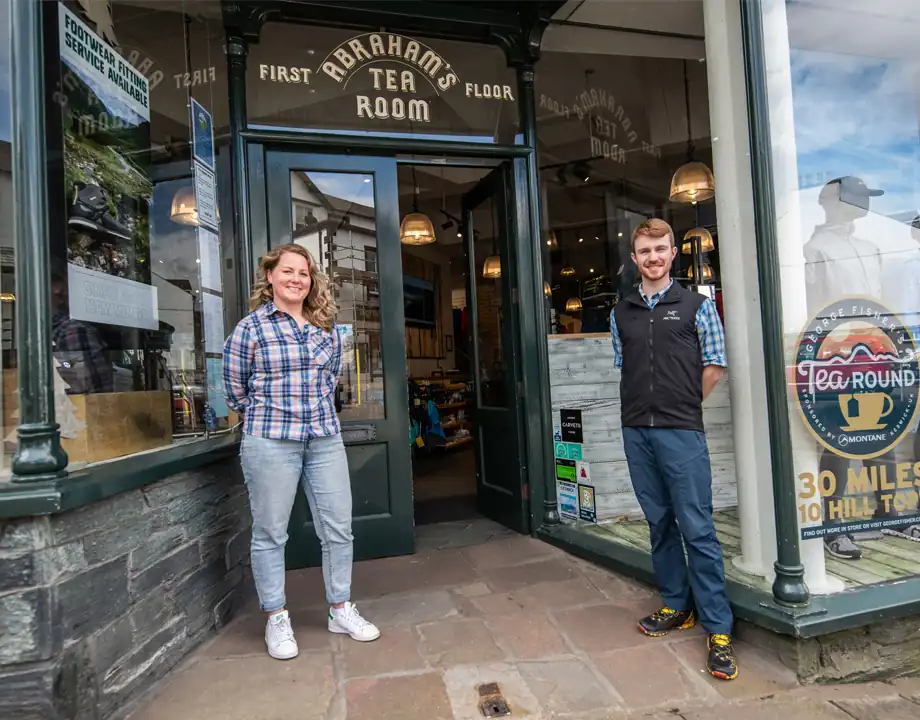
PUSHING ON with Mark Seaton in Chamonix reporting for George Fisher
Written by George Fisher
Wednesday, 17 February, 2021

The conversation went something like this...
“You have the old map; the glacier doesn't look like this any longer” said the Austrian path builder.
"We only just bought it", I replied.
"Well, the glacier is melting so fast that the routes are changing each year. The only way you are going to cross the glacier on your present route is if you swim!" said the Austrian as his pal grinned in agreement.
He pointed into the rain and the billowing mist. "The new path is way back down there", he said.
This was not an auspicious start for our attempt on what is the ‘jewel in the crown’ of Austrian alpinism, the Pallavicini Couloir which leads directly to the col between the Kleiner Glockner and the Grossglockner, Austria's highest and most famous mountain. After ‘warming up’ by climbing the north face of the Hochfeiler in the Zillertall, we had driven across Austria and over the spectacular Glockner pass to the starting point for our route: a giant multi-storey car park which would have made any city centre proud.
The Franz-Josefs-Haus is perched high above what used to be the mighty Pasterze glacier (2,370m), definitely Europe's highest and most incongruous multi-storey car park. The challenge for Charles and I was that the weather was not being cooperative. The one good day of our remaining time together was tomorrow, and the present day was miserable, cloudy and drizzling. We decided that if we were going to stand any chance of climbing the route, we needed to get to the bivouac hut today in order to take advantage of tomorrow’s good weather.
'To get to the place where the "we are lost" conversation had taken place, was tedious'
We left the car park and then walked down a track for about 300 vertical meters. Each step down was in effect a reminder of how much of the glacier had retreated. It was misty and raining lightly. We trudged along a path, looking for the point where we needed to cross the glacier. Instead we were met with a raging torrent that cut through what was the remains of the glacier. It was impassable. We couldn’t see much either, and this is the point where we bumped into the National Park workers who were restoring the path. To their credit they were very helpful, and they did help us get on the right track across the moraine. The problem was the weather was miserable and navigating across this uninspiring landscape was going to be difficult.
'We sat on a rock and munched on our sandwiches deciding if we should give up'
This took a lot of discussion. I reasoned that once we were across the glacier and established on the route to the bivouac hut, the route on the map would be correct because if the path was not on the glacier it would not have moved. Plus, the weather forecast on my phone suggested the weather might clear a bit in the afternoon. We decided to carry on. The weather did clear, but only long enough to welcome in an afternoon storm that was not predicted. The storm drenched us, yet fortunately there was no thunder and lightning mixed in, so we marched up steep snow and then onto the ridge which supports the bivouac hut. At the designated height, we thought we should be able to see the hut.
'Yet we could not even see our hands in front of our faces'
We really needed to find the hut and escape out of the rain. Trying to find a grey tin box camouflaged by matching grey mist was a challenge. Suddenly Charles shouted that he had seen something that might be the hut, about 20 metres below us. Something he had done several times already, but this time he was right. We were safe. Mind you, it wasn’t much bigger than a big tin can. Yet as the saying goes; "Any port in a storm". Plus, we had the hut to ourselves, the benefit of arriving in a torrential downpour. We sorted ourselves out and collected some snow to melt for a mug of tea. It had taken us around nine hours to get there, notwithstanding all the earlier dithering (the guide book had suggested three hours). What we would end up doing tomorrow was another question, as the weather had still not cleared. It needed to improve so the snow and ice might stand some chance of freezing. We turned in at about 8pm and agreed to set the alarm for 2am, get up and have a look. I was not optimistic.

'At about 9pm I was convinced I could hear voices, but just assumed I was hallucinating and finding it difficult to get to sleep'
I drifted off, only to be rudely awakened by someone banging on the hut door at 9.30. I couldn't believe it; two Austrian climbers had turned up with the intention of attempting the same route as us. After the initial hassle of having to accommodate our ‘guests’, we realized that the two Austrians had at least legitimised our decision to try the climb. Or more likely, they were just as nuts as Charles and myself. The alarm was brutal. I wrestled with the tin hut door and it flew open, revealing something I had not seen so far; a view. The first view of anything meaningful in a few days. We were on. We drank a pint of tea each and forced down some ‘builder bars’, then we were off across the glacier to the foot of the couloir. Conditions underfoot were not the best, because the snow had hardly frozen. The snow would almost support your weight, but once you committed to the step you would inevitably sink up to your knees. Still, it was do-able. The approach is meant to take 30mins but took us an hour. The Austrians caught us up, primarily because they used our footprints instead of making their own. We crossed the rimaye (the last crevasse between the glacier and the mountain) and established ourselves in the couloir proper.
'The conditions were suddenly excellent and allowed us to move together, without climbing the route in pitches'
We made rapid rhythmical progress, gaining height quickly. While all this was happening the sun had appeared, and rather unhelpfully started to melt the snow at the top of the couloir. Big lumps of ice started to pepper us, sometimes bouncing off our helmets, sometimes zooming past like bullets. After about two and a half hours I spotted the summit cross on the top of the Grossglockner and was suckered into assuming that it was not too far away. Yet of course I was wrong. The ground steepened up significantly, and then the snow vanished to leave a section of loose, serious rock climbing.

'The sort of climbing where each potential hold became a deadly hand-held missile'
A missile that threatened everyone below me. It was serious ground. This difficult climbing lasted about 100 metres then fortunately the angle eased and there was more snow, which led to the breche between the two summits. Fifteen minutes later we were at the cross; we had climbed the Pallavicini Couloir and were now at the highest point in Austria. It would be another long six hours before we were back at the car. A magnificent but hard-won summit.



